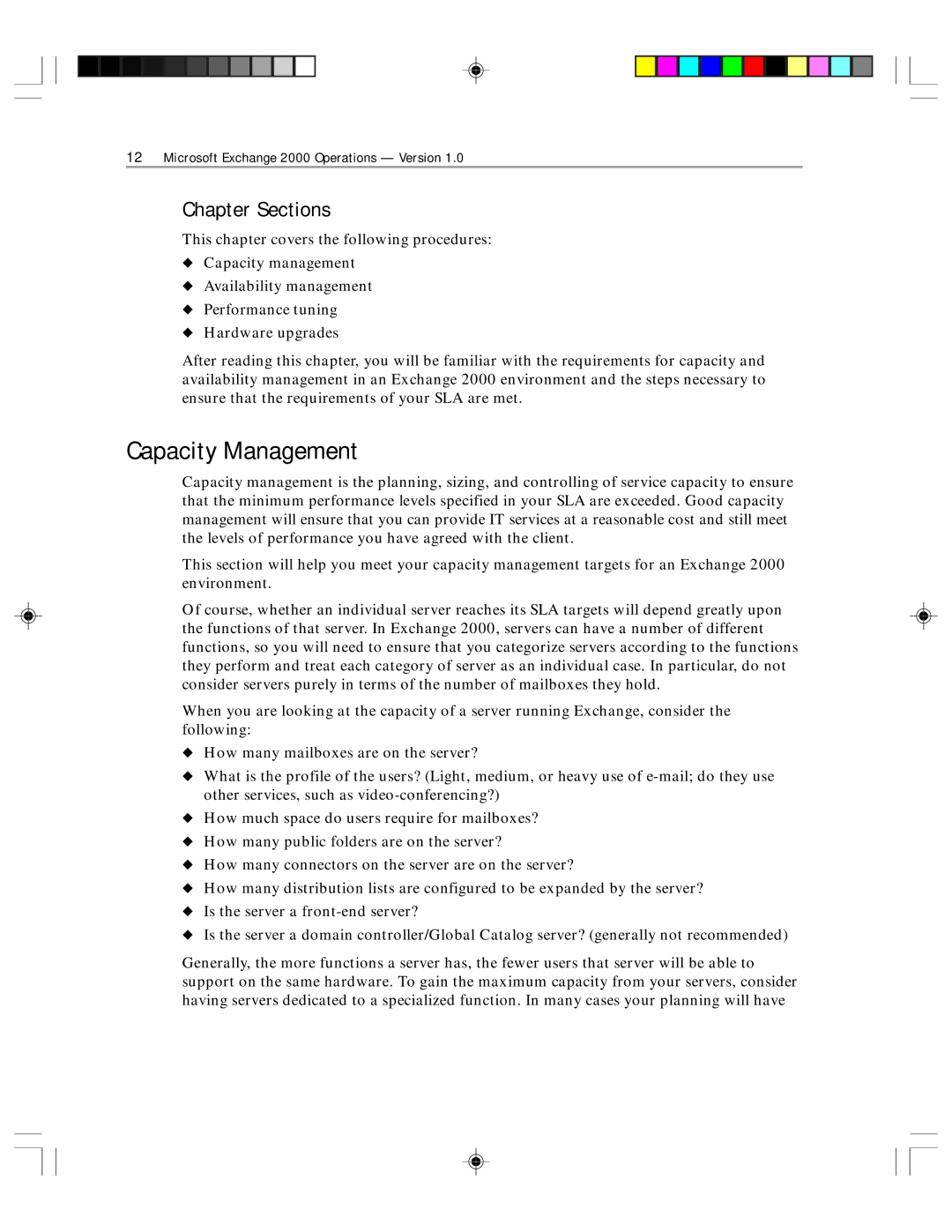
12Microsoft Exchange 2000 Operations — Version 1.0
Chapter Sections
This chapter covers the following procedures:
◆Capacity management
◆Availability management
◆Performance tuning
◆Hardware upgrades
After reading this chapter, you will be familiar with the requirements for capacity and availability management in an Exchange 2000 environment and the steps necessary to ensure that the requirements of your SLA are met.
Capacity Management
Capacity management is the planning, sizing, and controlling of service capacity to ensure that the minimum performance levels specified in your SLA are exceeded. Good capacity management will ensure that you can provide IT services at a reasonable cost and still meet the levels of performance you have agreed with the client.
This section will help you meet your capacity management targets for an Exchange 2000 environment.
Of course, whether an individual server reaches its SLA targets will depend greatly upon the functions of that server. In Exchange 2000, servers can have a number of different functions, so you will need to ensure that you categorize servers according to the functions they perform and treat each category of server as an individual case. In particular, do not consider servers purely in terms of the number of mailboxes they hold.
When you are looking at the capacity of a server running Exchange, consider the following:
◆How many mailboxes are on the server?
◆What is the profile of the users? (Light, medium, or heavy use of
◆How much space do users require for mailboxes?
◆How many public folders are on the server?
◆How many connectors on the server are on the server?
◆How many distribution lists are configured to be expanded by the server?
◆Is the server a
◆Is the server a domain controller/Global Catalog server? (generally not recommended)
Generally, the more functions a server has, the fewer users that server will be able to support on the same hardware. To gain the maximum capacity from your servers, consider having servers dedicated to a specialized function. In many cases your planning will have
